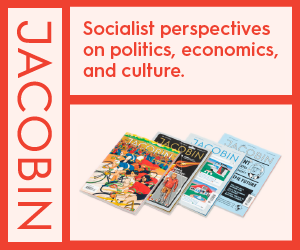American Labour Debates Radical Moves
An outsider looking at the Canadian labour movement might be tempted to ask why we call it a movement. True, most union members are institutionally bound together by their union’s affiliation with the Canadian Labour Congress. But the genuine solidarity that exists between union members is too often eclipsed by the competition between the unions they belong to.
Unions compete with one another during membership recruitment drives. Sometimes the contest is above board and the workers get to make a choice of the union that will represent them. Sometimes employers will seek out right-wing unions and agree to voluntary recognition agreements. Where this happens, bosses and union leaders make the decision of union representation without any input from the workers involved. The now-defunct IWA performed this service for the multinational companies that were awarded contracts by the British Columbia government as part of its attack on the Hospital Employees’ Union. The Teamsters also play this role. Thanks to the no-raiding rules of the Canadian Labour Congress, it is very difficult for other unions to intervene. The workers are effectively locked into undemocratic unions selected by their employers.
Not surprisingly these company unions often sign lousy collective agreements, which effectively undermine the efforts of legitimate unions to raise wages and improve working conditions.
Another problem confronting the labour movement is its failure to increase the density of union membership, especially in the financial, retail and service sectors. There’s been little serious and organized cooperation among unions since the CLC’s attempts to organize bank workers in the late seventies and early eighties. Instead, it has been left up to individual unions to take on many of the world’s largest corporations. Despite greatly increased organizing efforts of individual unions, overall union density in the private sector has fallen to 18 per cent. The public sector has remained constant, at 70 per cent.
Until recently it might have been possible to ignore many of the weaknesses of the movement. For the most part, collective bargaining was producing good results. Most unions were improving their services, especially regarding union education and health and safety. Struggles like Ontario’s “Days of Action” and the huge labour turnout at the Quebec City demonstrations were visible proof that labour and its allies still had a lot of muscle. But deregulation, free trade and American protectionism have severely reduced the power of unions in several major industries. Add to this a rising dollar, increased competition from non-union businesses and the election of rabidly anti-union provincial governments, and the situation starts to look like the beginning of a crisis.
All these problems are even more pronounced in the United States, where union density is lower, labour laws worse and the political climate a disaster. But, unlike here, many of the major leaders of the American labour movement are engaged in a serious debate about the changes necessary to revitalize the movement. Andy Stern, president of the Service Employees International Union (SEIU), has presented a ten-point reform plan entitled “Unite To Win,” which he wants adopted by the AFL-CIO. The plan can be found at www.unitetowin.org.
Central to Stern’s plan is the need to restructure the U.S. labour movement into fewer unions. The paper notes that the unionized workforce in almost every sector of the economy is divided among many unions. There are 13 unions with significant numbers of public employees, and nine major unions in manufacturing. Health-care union members are divided into more than 30 unions. In 13 of the 15 major sectors of the economy, there are at least four significant unions, and in nine of those sectors there are at least six unions. Stern argues that a consolidation of unions would not only provide greater bargaining power, but would also enhance the democratic rights of the workers. “True union democracy is impossible when workers who do the same type of work and deal with the same employers don’t have the opportunity to decide how to pool their strength behind common strategies.”
Unite To Win provides a comprehensive program of reforms that goes far beyond structural changes. It addresses the need for unions to increase their organizing efforts and foresees a role for labour councils and the AFL-CIO in providing a strategic focus for organizing. It calls upon the AFL-CIO to lead a national grassroots campaign to win access to quality health care for all Americans.
The exciting thing about Stern’s proposal is that it has helped to stimulate a very dynamic debate. Certainly not all progressives share Stern’s perspectives. The September/October, 2004 issue of Against the Current contains a brilliant critique by Steve Early, a veteran progressive organizer with the Communications Workers of America.
Canadian unionists are used to reflecting on the problems of the American labour movement. As we prepare for the upcoming Canadian Labour Congress convention, we can learn much from their reflections upon the solutions to our common problems.
Geoff Bickerton is CD’s commentator on national labour issues. He lives in Ottawa.
This article appeared in the January/February 2005 issue of Canadian Dimension .







